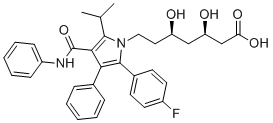Importantly, the injury is controllable. Measurement of flash visual evoked potentials is an objective and effective way to evaluate optic nerve function. In this study, transplantation of hUCBSCs significantly recovered optic nerve function as reflected by the change in F-VEP waveform. This provided solid evidence that the transplanted hUCBSCs protected neurons in the animal model and transplantation of hUCBSCs is a promising strategy for TON therapy. However, questions also rise from the current study. For example, how hUCBSCs were able to regulate GRP78 and CHOP expression remains unclear. Which plays the bigger role in RGC survival in the transplantation group: the differentiation of hUCBSCs into RGCs or the neuroprotective effect of hUCBSCs? Also, whether a combination of hUCBSC transplantation with classic therapy strategy, such as steroids application and surgical decompression, is more effective needs more study. In conclusion, intravitreal transplantation of hUCBSCs is effective in recovering retinal nerve function through increasing RGC count. After transplantation, the increased RGC count, which could be the direct result of hUCBSC differentiation, is associated with a decrease in retinal cell apoptosis. Transplantation inhibits RGC apoptosis through inhibiting ER stress by upregulating GRP78 and downregulating CHOP expression. Our results strongly suggested that intravitreal transplantation of hUCBSCs is a promising strategy to treat traumatic optic neuropathy. However, the mechanism of the  protective effect needs further in-depth study. The transparent cornea is the major refractive surface of the eye. Irreparable loss of corneal transparency is the major cause of blindness, second only to cataract. Chemical burns by alkali contribute significantly to the blindness arising from work related ocular injuries. Alkali burns may cause extensive damage to the corneal tissue and depending on the severity of exposure, they often result in permanent visual impairment. Corneal healing following alkali burn rarely restores the transparency, and culminates in corneal haze and opacity. Realizing the difficulty of treating corneal blindness once it has occurred, there is an enormous medical need to explore early and effective treatment options to enhance corneal wound healing and reduce corneal scarring. Transforming growth factor, a major cytokine that is up regulated following alkali burn, promotes migration of corneal epithelial cells and keratocytes, and transdifferentiates keratocytes into myofibroblasts, thereby leading to wound repair. However, increased expression of TGF b causes accumulation of myofibroblasts in the stromal layer of the injured cornea, leading to corneal haze. Myofibroblasts have altered crystallin formation and are less transparent than keratocytes. Pirfenidone is a novel therapeutic agent that exhibited antifibrotic activity in various animal models and clinical trials.
protective effect needs further in-depth study. The transparent cornea is the major refractive surface of the eye. Irreparable loss of corneal transparency is the major cause of blindness, second only to cataract. Chemical burns by alkali contribute significantly to the blindness arising from work related ocular injuries. Alkali burns may cause extensive damage to the corneal tissue and depending on the severity of exposure, they often result in permanent visual impairment. Corneal healing following alkali burn rarely restores the transparency, and culminates in corneal haze and opacity. Realizing the difficulty of treating corneal blindness once it has occurred, there is an enormous medical need to explore early and effective treatment options to enhance corneal wound healing and reduce corneal scarring. Transforming growth factor, a major cytokine that is up regulated following alkali burn, promotes migration of corneal epithelial cells and keratocytes, and transdifferentiates keratocytes into myofibroblasts, thereby leading to wound repair. However, increased expression of TGF b causes accumulation of myofibroblasts in the stromal layer of the injured cornea, leading to corneal haze. Myofibroblasts have altered crystallin formation and are less transparent than keratocytes. Pirfenidone is a novel therapeutic agent that exhibited antifibrotic activity in various animal models and clinical trials.